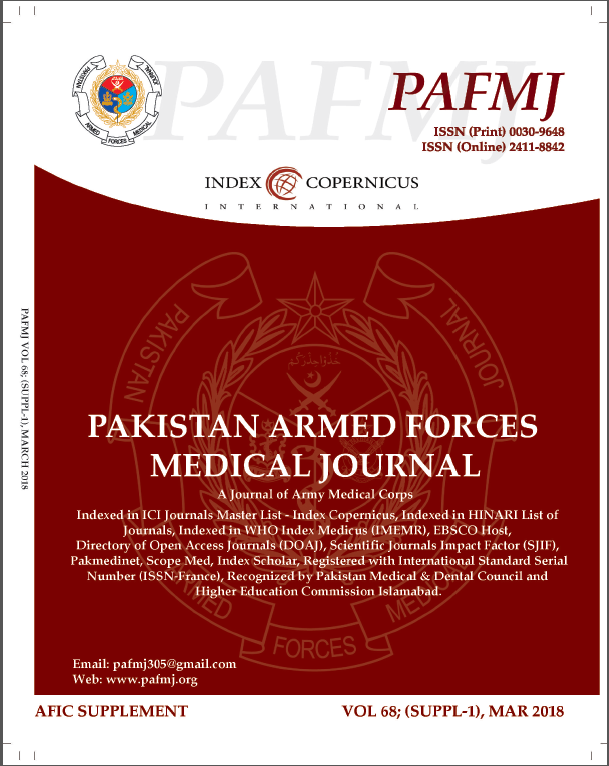HYPERLIPIDEMIA PATTERNS IN NEWLY DIAGNOSED YOUNG DIABETIC SOLDIERS: A DESCRIPTIVE CROSS-SECTIONAL STUDY
Keywords:
Hyperlipidemia, Diabetic Nephropathy, Diabetic RetinopathyAbstract
Objective: To report the patterns of hyperlipidemia in newly diagnosed young diabetic soldiers.
Study Design: A descriptive cross-sectional study.
Place and Duration of Study: Combined Military Hospital Multan, from Jan to Sep 2017.
Material and Methods: All newly diagnosed hospitalized type-II diabetic male soldiers, were included in the study after having their informed consent. All the data was collected protectively through consecutive sampling. Data collection tool was developed regarding patient demographics, co-morbids, previous medical history and laboratory findings.
Results: A Total of 55 patients were recruited for the study. The mean age of the patients was 41.1 ± 5.5 years and the range was 25 years to 50 years. All patients were males. Eight (14.5%) patients had diabetic nephropathy while diabetic retinopathy was present in 7 patients (12.7%). Family history was positive in 22 (40%) soldiers. Six (10.9%) patients were hypertensive while thirty nine patients (70.1%) were having type-II diabetes and 16 (29.1%) had type-I diabetes mellitus. About 46 (83.6%) patients had trace proteinuria, out of which 3 patients had +1proteinuria and 4 patients had +2 proteinuria. Mean LDL was 1.1 ± 4.1 mmol/L. Mean cholesterol was 4.5 ± 0.9 mmol/L while mean triglycerides was 2.4 ± 1.7 mmol/L andmean HDL 0.9 ± 2.0 mmol/L.
Conclusion: The study has clearly demonstrated statistically that high triglyceride levels are more prevalent than high LDL cholesterol levels in this patient group. Keeping the fact in view that hypertriglyceridaemia is a serious risk factor for the development of coronary artery disease it is therefore of paramount importance that this abnormality should be sought out at the outset of diabetes mellitus and addressed accordingly.











